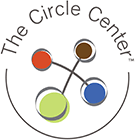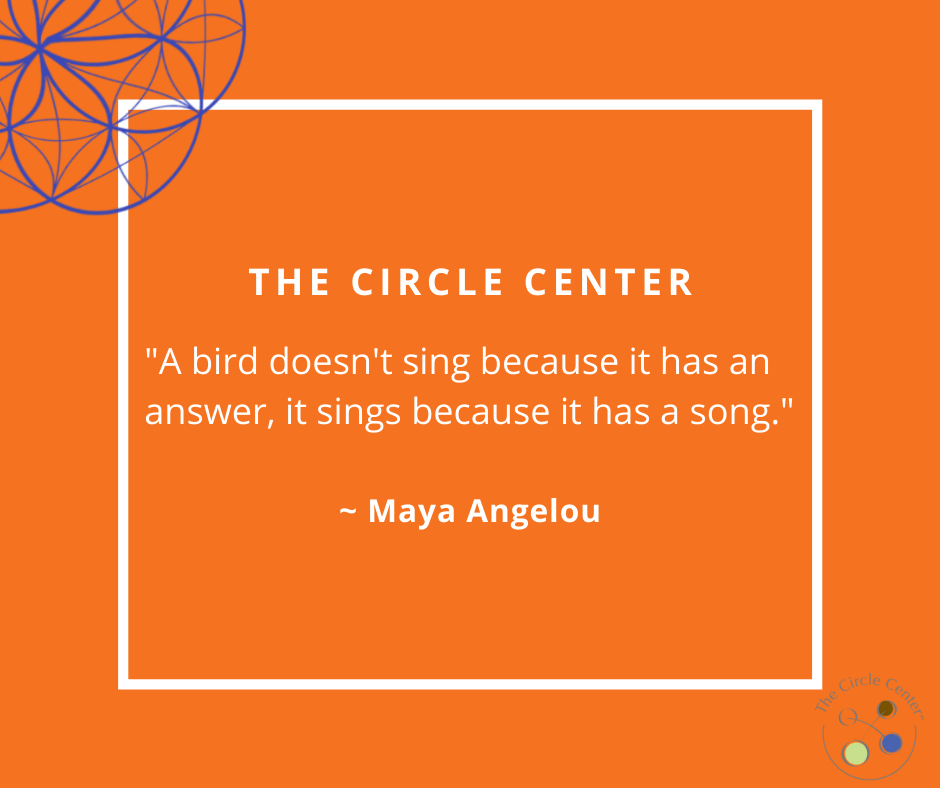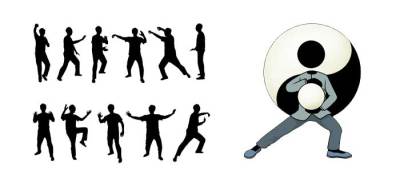Breathe deeply. Return to your body, your chest where your breath resides- where your song lives. Touch your heart with your awareness. What unique truth is singing there for you today? How will you honor this guidance and encourage others to do the same. This simple resilience practice IS leadership and the only way to share it is to practice singing your own song first.
Category: Organizational Culture Insights- The Circle Center
Simple Coaching Components Improve Durability of Profession Development Training in Organizations
Recent research indicates that training alone may not create the broad-based and sustainable change and development organizations are seeking. In response to this data, many organizations are exploring options for integrating coaching in their organizations to support development of strategically targeted professionals. Doug Riddle of the Center for Creative Leadership states in the recently published Handbook of Coaching in Organizations that there are essentially 7 key elements to integrating coaching in an organization from a systems-design perspective: executive coaching, mentoring, peer coaching, HR coaching, manager-as-coach and skillful use of goal tracking and reminder systems to support the participating professionals.
How are you supporting the durability of your training efforts? Coaching components are a great way to make sure you get the most for your training buck while also creating additional leadership development opportunities for the professionals involved.
Gender Equality and Your Organizational Culture…
One of the largest employment jury verdicts in U.S. history was recently awarded against Memphis headquartered AutoZone, Inc. The jury awarded Rosario Juarez $185 million dollars in punitive damages ($25 million more than her $160 million punitive damages request) and another $872,00 for lost wages and emotional stress. The verdict included findings of gender and pregnancy discrimination, harassment/failure to prevent harassment and retaliation even though basic levels of training were in place. While AutoZone will eventually recover financially from this blow, what steps do they need to take to repair their reputation, ensure these kinds of violations don’t happen again and to restore employee trust and engagement? Training alone will not suffice. There will need to be a well-orchestrated plan to address the California Court’s and the EEOC’s concerns. And, what about your organization? What is your company doing to support its basic anti-harassment/discrimination policies? Statistics show that mere training is not enough. Successful companies use a combination of policies, consistent company messaging and modeling, organizational system design and strategic periodic professional development coaching and team facilitation as well as interactive and practical trainings. Now is the time to evaluate your culture and professional development plan. If you are ever in the position AutoZone found themselves in and are asked about what steps you took to support your training efforts to ensure they actually impacted your culture for a positive and safe work environment, what will you say?
Mindfulness at Work- CEO musings from a near death experience.
The New York Times published an article this week about Aetna’s CEO and his efforts to incorporate mindfulness personally, professionally and, now, organizationally following a near-death skiing accident. While his journey to mindfulness is likely more dramatic, and traumatic, than some, Mark Bertolini appears to be gracefully managing his newfound urge to share personal presence-based practices while also honoring the beliefs and reservations of the other professionals at Aetna. The result? The long term result of Bertolini’s efforts may not be known for several years . But, the immediate results are apparent- including cutting-edge data and scientific advancements in organizational development on the impact of utilizing presence-based practices to lower cortisol, the stress hormone, while on the job and also a long-awaited pay increase for the lowest paid professionals in the Aetna community. How can centering or mindfulness practice support you and both the people and the work of your organization?
http://www.nytimes.com/2015/03/01/business/at-aetna-a-ceos-management-by-mantra.html?_r=1
Discovering the cost of conflict…
Recent studies show that managers and business leaders spend as much as 50% of their time dealing with conflict and interpersonal issues, especially during times of change or transition. Whether a team member needs help achieving personal or professional goals; communicating or problem-solving with team-members; or, refraining from conduct that is damaging or costly to the organization; an investment in either coaching or training in this area for an individual or a group is well worth the investment of time and resources. The cost of conflict is high for organizations both in terms of retention, lost productivity, lowered morale, loss of intellectual property, reduced decision-making quality, employee theft and much more. The Circle Center provides a cutting edge cost of conflict assessment tool for organizations. Contact the Circle Center if you are interested in learning about your organization’s “brand” when it comes to conflict and if the conflict costs you are incurring could pay to increase the conflict competency and culture at your organization.
Wo-mentoring program improvements required.
Almost 80% of Fortune 500 Companies have mentoring programs. Benefits to mentees, mentors and organizations are well researched and documented for all to see. Yet, studies show that many women are still reluctant to help other women coming along professionally and in their workplaces. Why is that? What would make a difference? One important shift might include viewing opportunities for women as being more abundant and available, as opposed to being limited and hard to come by. Writer Margaret Morford talks about this phenomena in her recent article “3 Hurdles Women Put In the Way of Their Own Advancement.” “(V)ery few successful women reach down and help other women. I often see an attitude of ‘I had to claw my way to the top, so they should too,'” says Morford. What are you and your organization doing to help shift this perspective in women business and organization leaders? If you want to develop a sustainable, meaningful mentoring culture in your organization, paying attention to this dynamic is important.
Is the Force strong in your organization?
Doing a QiGong exercise with a group of executives today before an Executive Peer Circle, I began to contemplate the concept of Chi (or Qi, pronounced “Chee”) and how that relates to organizations as well as individuals. Traditionally, in Chinese culture, qi (also chi or ch’i) is the name given to “natural energy”, “life force”, or “energy flow”, and literally translated as “breath”, “air”, or “gas” that, if missing or blocked or over-stimulated, caused illness or dis-ease in the body of a person. Look around, “read the air.” How full are the gas tanks of your employees? Are there places in your organization where energy is stagnant? Are there places where the energy is frenetic, almost out of balance? As leaders, our impact on the Chi of our organization can not be understated. Wikipedia states that the ancient Chinese believe this life force “permeates everything and linking their surroundings together. They likened it to the flow of energy around and through the body, forming a cohesive and functioning unit.” What is the flow like around the body that is your organization, its employees and its stakeholders? Get still, get observant and see what you notice. The need for adjustment will naturally make itself known once you take time to check in. It is my experience that many leaders have ample wisdom around how to make these adjustments; however, it is only the truly great leaders that listen regularly so they can adjust before the symptoms of organizational dis-ease become too pronounced.
Out-run (Like a Girl) your competitors.
By 2030, women will hold 2/3 of US Wealth. Recent stats from the U.S. Department of Education indicate women control $12 trillion of the total $18.4 trillion consumer spending and are critically important to the profitability of organizations. Organizations that hire, develop and promote women have shown to benefit greatly from the massive market insight we possess. Goldman Sachs and Columbia University have both found through independent studies that companies employing women in large numbers out perform competitors on every measure of profitability- productivity, rate of returns, debt reduction, engagement, customer satisfaction and more. What are you doing to hire, promote and keep women leaders in your organization? Global company leaders, the World Bank and the Australian government work diligently to provide organizations in every market with workable models and case studies for companies looking to provide more opportunities for female corporate leadership. Which of their suggestions might fit with your strategic goals for this year?
https://www.humanrights.gov.au/sites/default/files/document/publication/2013_AHRC_MCC_accelerating_advancement_women.pdf
Gotta play, to innovate.
In 2014, the World Intellectual Property Organization (a Geneva based, specialized agency of the United Nations) released its annual report on innovation statistics worldwide. The US ranked 6th, down one spot from 5th last year and ranked #1 in the category of Quality of Innovations. The human factor of creativity is the key aspect to sparking innovation and creating organizational cultures where research and development thrive. What role do leaders play in creating such cultures? To be sure, organizations are careful to choose highly competent and educated employees, but even then, there are some organizations that just out perform equally staffed organizations. But how do the best organizations create and support this? Research indicates that companies such as Google, Kodak, Pixar, Yahoo!, Southwest Airlines and the ice cream underdog story Ben & Jerry’s, all have interesting similarities in their culture. They play. They encourage humor and creativity and they work diligently to intrinsically motivate employees around mission and goals (rather than resorting to the “old stick and carrot” approach which has been shown to actually suppress innovation). These leaders of innovation make “play” time part of an employee’s schedule with regular time for non-work related activities. There are countless tales of incredible apps, products, services and process improvements originating from this “play” time. What can you do to foster creativity in your organization? Maybe it’s time to give the concept of fun some serious thought.
Gender equality and your organization culture….
One of the largest employment jury verdicts in U.S. history was recently awarded against Memphis headquartered AutoZone, Inc. The jury awarded Rosario Juarez $185 million dollars in punitive damages ($25 million more than her $160 million punitive damages request) and another $872,00 for lost wages and emotional stress. The verdict included findings of gender and pregnancy discrimination, harassment/failure to prevent harassment and retaliation even though basic levels of training were in place. While AutoZone will eventually recover financially from this blow, what steps do they need to take to repair their reputation, ensure these kinds of violations don’t happen again and to restore employee trust and engagement? Training alone will not suffice. There will need to be a well-orchestrated plan to address the California Court’s and the EEOC’s concerns. And, what about your organization? What is your company doing to support its basic anti-harassment/discrimination policies? Statistics show that mere training is not enough. Successful companies use a combination of policies, consistent company messaging and modeling, organizational system design and strategic periodic professional development coaching and team facilitation as well as interactive and practical trainings. Now is the time to evaluate your culture and professional development plan. If you are ever in the position AutoZone found themselves in and are asked about what steps you took to support your training efforts to ensure they actually impacted your culture for a positive and safe work environment, what will you say?










